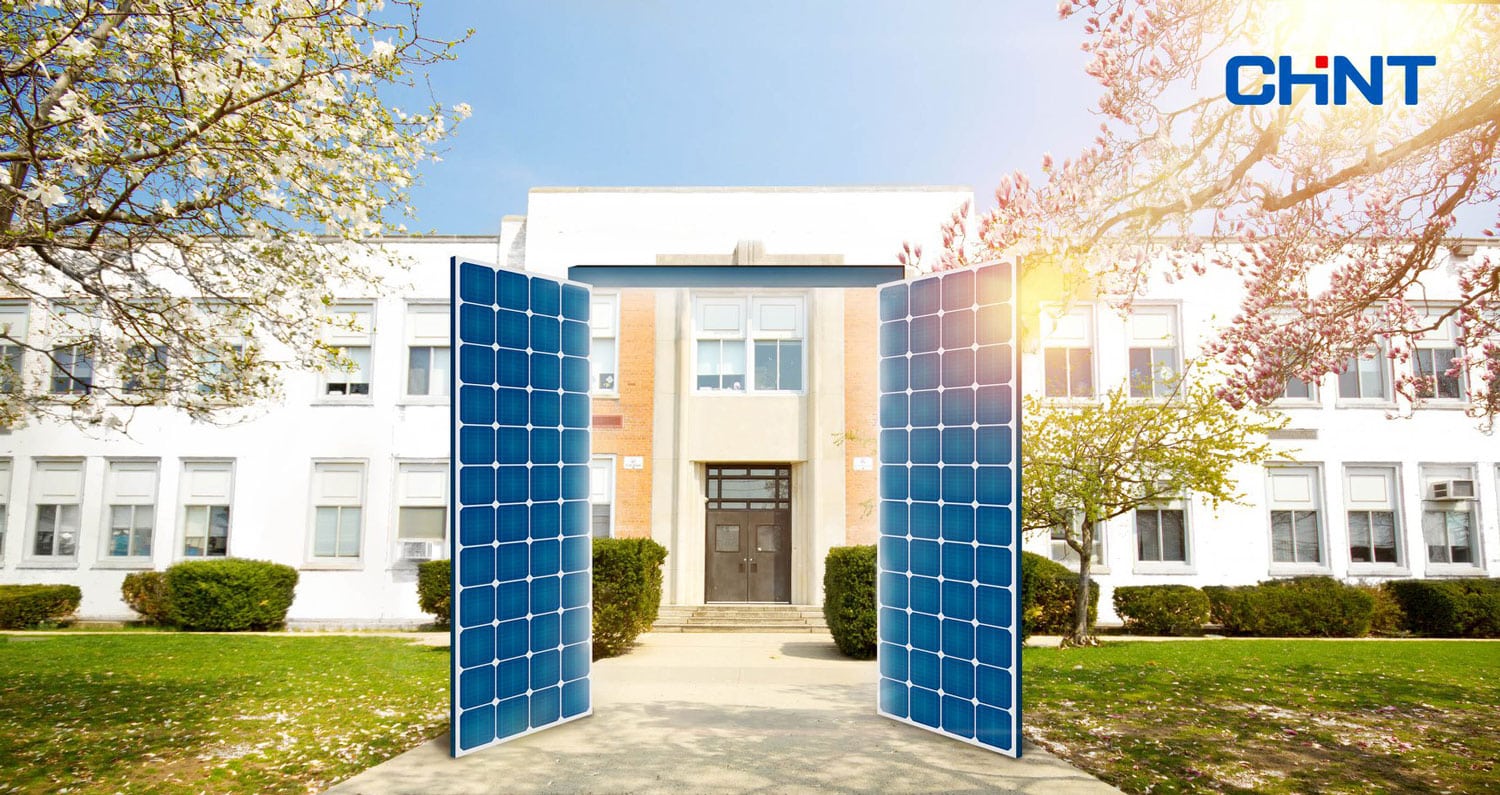Table of Contents |
With energy usage at an all-time high and mounting environmental concerns, the need for clean, renewable energy is increasing. Solar energy is an excellent option, as it is readily available and has less environmental impact than other renewable energy forms.
Building integrated photovoltaics allows buildings to maximize solar energy production while reducing long-term material and energy costs. Read on to learn more about BIPV and its many benefits.
What is BIPV?
Building integrated photovoltaics incorporates photovoltaic cells directly into a building’s facade instead of attaching PV to an existing facade. BIPV is typically included during construction, and architects design structures with BIPV in mind. In some cases, contractors may retrofit a building for BIPV, but it’s not as cost-effective upfront.
BIPV can take many forms on a building. It may be integrated into the roof or a part of the shingles. Larger buildings often opt to use BIPV as part of the building’s facade and often incorporate the cells into the windows.
Buildings may not get enough sunlight through the roof, but many-story structures can collect large amounts of solar energy through their many windows. Other facades, like awnings and skylights, are great locations for BIPV.
BIPV vs BAPV
BIPV is part of the structure. They serve dual purposes as energy collectors and building materials. BAPV (building applied photovoltaics) is PV added to existing systems. BAPV only serves as energy collectors. These buildings require standard building materials.
How Does BIPV Work?
BIPV systems are incorporated into the building envelope, providing energy for the building while serving as weather protection, insulation, noise reduction and more.
PV systems are installed in modules. Two common types of modules are currently in use – thick-crystal products and thin-film products. Thick-crystal cells are made of crystalline silicon. They generate 10-12 watts per sq ft in full sunlight. Thin-film products are thin layers of PV material applied to a glass or metal substrate. These produce 4-5 watts per sq ft in full sunlight. While thin-film products have a lower output, they are less expensive.
When it comes to energy collection, building integrated photovoltaics works similarly to other PV systems. Photons from sunlight strike the semi-conductive materials of the BIPV. Some photons are absorbed and converted into energy. The absorbed photons dislodge atoms from the material, creating a negative charge and attracting them to the front of the surface. The imbalance creates an electrical current. A PV inverter converts energy to power buildings and homes.
The electricity may be stored for later use, may immediately be used for power or sent to the grid. Most building-integrated photovoltaics systems are integrated into the electrical grid, but some are independent and rely on other power sources, like batteries or generators, when solar power is unavailable.
Benefits of BIPV?
There are many benefits to BIPV systems. They offer clean, renewable energy that is good for the environment and can save building owners money. Businesses are more likely to install BIPV over BAPV, as they integrate seamlessly into a building’s architecture. A design does not have to sacrifice aesthetics.
BIPV is more cost-effective in the long term, particularly when it’s incorporated during the construction phase. Since the system replaces some conventional building materials, purchasing those materials and solar energy equipment is unnecessary. It is all done for one cost. The building will save money on power and may be able to offset more of the costs with tax incentives.
One issue with solar power is that energy isn’t always available when needed. With BIPV, peak energy collection and peak energy consumption often coincide.
The structure can use the power immediately instead of the added need for storage. The system will not have to rely as much on the grid, saving on energy costs. Over time, the reduced energy costs will far outweigh the initial installation and materials costs.
Challenges and Limitations of BIPV
While there are many benefits to building integrated photovoltaics, there are still some challenges and limitations to consider. The upfront costs are more expensive, especially when using conventional building materials and no solar energy system.
BIPV systems are also more costly than BAPV systems. However, the savings over time are likely to offset the initial costs. Since buildings can adopt a BIPV system while maintaining architectural aesthetics, they’ll be more likely to use them. The environmental benefits far outweigh the costs.
With BIPV, design and installation may be more complex than conventional building materials. Architects should be experienced with PV systems, and the design may require some creativity to ensure the proper amount of solar power without sacrificing aesthetics.
Trained contractors will also need to be involved in the installation. Maintenance may be challenging, as fixing issues is complicated and requires trained professionals.
Applications for BIPV
BIPV has several practical applications in a building. Any type of facade that receives significant sunlight is a viable option. Designers often use roofs and skylights for BIPV. As large buildings need more energy and don’t have enough surface area on the roof, windows are another excellent location. Windows work particularly well for buildings that are the tallest structure in the area.
BIPV systems contribute to sustainable construction by meeting the needs of large buildings while reducing the need for fossil fuels. Progress is essential, and BIPV allows for progress with less environmental harm.
Conclusion
BIPV allows businesses to contribute to a renewable future without sacrificing aesthetics. The technology is sustainable and cost-effective over time. If you’re considering building integrated photovoltaics for a new construction project or if you’re interested in retrofitting an existing structure, Chint Global can help.
We offer high-quality products to meet your needs. Our team is always available to help you find the best solutions for your solar energy needs.
FAQ about Building Integrated Photovoltaics
How does BIPV compare to traditional solar panels?
How efficient are BIPV systems?
Are BIPV systems more expensive than traditional solar panels?













